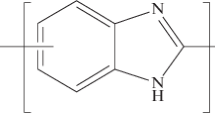Abstract
Employing differently substituted benzaldehydes as model drugs, their dynamics is investigated under the influence of the coil-to-globule transition of poly(N-isopropylacrylamide), which shows lower critical solution temperature behaviour. Using 1H-NMR spectra, partial incorporation of the model drug into precipitated polymer particles is shown. The fraction of drug, which is rigidly incorporated, is linearly correlated to the shift of the transition temperature, which it induces for the polymer. By 1H-NMR spin relaxation measurements on ethylvanillin, 3,4-dimethoxybenzaldehyde and salicylaldehyde the influence of the polymer transition on the model drug dynamics is detected. The data are interpreted in terms of different sites of drug localisation, i.e. rigidly incorporated, loosely bound and free in the aqueous phase, which are identified by their different dynamics. Drug molecules strongly interacting with the polymer, as documented by a large shift of the transition temperature, exhibit only strongly bound and free sites, while with decreasing drug–polymer interaction drug an additional loosely bound site occurs.









Similar content being viewed by others
References
Schild HG (1992) Poly (N-isopropylacrylamide)—experiment, theory and application. Prog Polym Sci 17:163–249
Winnik FM (1990) Fluorescence studies of aqueous solutions of poly(N-isopropylacrylamide) below and above their LCST. Macromolecules 23:233–242
Bae YH, Okano T, Hsu R, Kim SW (1987) Thermo-sensitive polymers as on–off switches for drug release. Makromol Chem Rapid Commun 8:481–485
Vo CD, Kuckling D, Adler HJP, Schönhoff M (2002) Preparation of thermosensitive nanogels by photo-cross-linking. Colloid Polym Sci 280:400–409
Lynch I, Dawson KA (2004) Release of model compounds from “plum-pudding”-type gels composed of microgel particles randomly dispersed in a gel matrix. J Phys Chem B 108:10893–10898
Wang Q, Zhao Y, Yang Y, Xu H, Yang X (2007) Thermosensitive phase behavior and drug release of in situ gelable poly(N-isopropylacrylamide-co-acrylamide) microgels. Colloid Polym Sci 285:515–521
Gaucher G, Dufresne MH, Sant VP, Kang N, Maysinger D, Leroux JC (2005) Block copolymer micelles: preparation, characterization and application in drug delivery. J Control Release 109:169–188
Zeng J, Shi K, Zhang Y, Sun X, Deng L, Guo X, Du Z, Zhang B (2008) Synthesis of poly(N-isopropylacrylamide)-b-poly(2-vinylpyridine) block copolymers via RAFT polymerization and micellization behavior in aqueous solution. J Colloid Interface Sci 322:654–659
Zhang ZC, Jin JJ, Bautista F, Lyons LJ, Shariatzadeh N, Sherlock D, Amine K, West R (2004) Ion conductive characteristics of cross-linked network polysiloxane-based solid polymer electrolytes. Solid State Ionics 170:233–238
Zhang JX, Qiu LY, Wu XL, Zhu KJ (2006) Temperature-triggered nanosphere formation through self-assembly of amphiphilic polyphosphazene. Macromol Chem Phys 207:1289–1296
Lynch I, de Gregorio P, Dawson KA (2005) Simultaneous release of hydrophobic and cationic solute from thin-film “plum-pudding” gels: a multifunctional platform for surface drug delivery? J Phys Chem B 109:6257–6261
Kosik K, Wilk E, Geissler E, László K (2007) Distribution of phenols in thermoresponsive hydrogels. Macromolecules 40:2141–2147
Dhara D, Chatterji PR (1999) Effect of hydrotropes on the volume phase transition in poly(N-isopropylacrylamide) hydrogel. Langmuir 15:930–935
Coughlan DC, Quilty FP, Corrigan OI (2004) Effect on drug physicochemical properties on swelling/deswelling kinetics and pulsatile drug release from thermoresponsive poly(N-isopropylacrylamide) hydrogels. J Control Release 98:97–114
Coughlan DC, Corrigan OI (2006) Drug–polymer interactions and their effect on thermoresponsive poly(N-isopropylacrylamide) drug delivery systems. Int J Pharm 313:163–174
Spevacek J (2009) NMR investigations of phase transition in aqueous polymer solutions and gels. Curr Opin Colloid Interface Sci 14:184–191
Andersson M, Maunu SL (2006) Volume phase transition and structure of poly(N-isopropylacrylamide) microgels studied with 1H-NMR spectroscopy in D2O. Colloid Polym Sci 285:293–303
Burba CM, Carter SM, Meyer KJ, Rice CV (2008) Salt effects on poly(N-isopropylacrylamide) phase transition thermodynamics from NMR spectroscopy. J Phys Chem B 112:10399–10404
Tokuhiro T, Amiya T, Mamada A, Tanaka T (1991) NMR study of poly(N-isopropylacrylymide) gels near phase transition. Macromolecules 24:2936–2943
Badiger MV, Rajamohanan PR, Kulkarni MG, Ganapathy S, Mashelkar RA (1991) Proton MASS-NMR: a new tool to study thermoreversible transition in hydrogels. Macromolecules 24:106–111
Ohta H, Ando I, Fujishige S, Kubota K (1991) Molecular motion and 1H NMR relaxation of aqueous poly(N-isopropylacrylamide) solution under high pressure. J Polym Sci B-Polym Phys 29:963–968
Zeng F, Tong Z, Feng HQ (1997) NMR investigation of phase separation in poly(N-isopropyl acrylamide)/water solutions. Polymer 38:5539–5544
Yushmanov PV, Furó I, Iliopoulos I (2006) Kinetics of demixing and remixing transitions in aqueous solutions of poly(N-isopropylacrylamide): a temperature-jump 1H NMR study. Macromol Chem Phys 207:1972–1979
Starovoytova L, Spěvaček J, Ilavsky M (2005) H-1 NMR study of temperature-induced phase transitions in D2O solutions of poly(N-isopropylmethacrylamide)/poly(N-isopropylacrylamide) mixtures and random copolymers. Polymer 46:677–683
Rusu M, Wohlrab S, Kuckling D, Möhwald H, Schönhoff M (2006) Coil-to-globule transition of PNIPAM graft copolymers with charged side chains: A H-1 and H-2 NMR and spin relaxation study. Macromolecules 39:7358–7363
Schönhoff M, Larsson A, Welzel PB, Kuckling D (2002) Thermoreversible polymers adsorbed to colloidal silica: A H-1 NMR and DSC study of the phase transition in confined geometry. J Phys Chem B 106:7800–7808
Spěváček J (2005) Phase separation in aqueous polymer solutions as studied by NMR methods. Macromol Symp 222:1–13
Hanyková L, Labuta J, Spěvaček J (2006) NMR study of temperature-induced phase separation and polymer–solvent interactions in poly(vinyl methyl ether)/D2O/ethanol solutions. Polymer 47:6107–6116
Hofmann C, Schönhoff M (2009) Do additives shift the LCST of poly(N-isopropylacrylamide) by solvent quality changes or by direct interactions? Colloid Polym Sci 298:1369–1376
Gottlieb HE, Kotlyar V, Nudelman A (1997) NMR chemical shifts of common laboratory solvents as trace impurities. J Org Chem 63:7512–7515
Meiboom S, Gill D (1958) Modified spin-echo method for measuring nuclear relaxation times. Rev Sci Instrum 29:688–691
Larsson A, Kuckling D, Schönhoff M (2001) 1H NMR of thermoreversible polymers in solution and at interfaces: the influence of charged groups on the phase transition. Colloid Surf A 190:185–192
Van der Beek GP, Stuart MAC, Cosgrove T (1991) Polymer adsorption and desorption studies via H-1-NMR relaxation of the solvent. Langmuir 7:327–334
Author information
Authors and Affiliations
Corresponding author
Rights and permissions
About this article
Cite this article
Hofmann, C.H., Schönhoff, M. Dynamics and distribution of aromatic model drugs in the phase transition of thermoreversible poly(N-isopropylacrylamide) in solution. Colloid Polym Sci 290, 689–698 (2012). https://doi.org/10.1007/s00396-011-2577-7
Received:
Revised:
Accepted:
Published:
Issue Date:
DOI: https://doi.org/10.1007/s00396-011-2577-7



